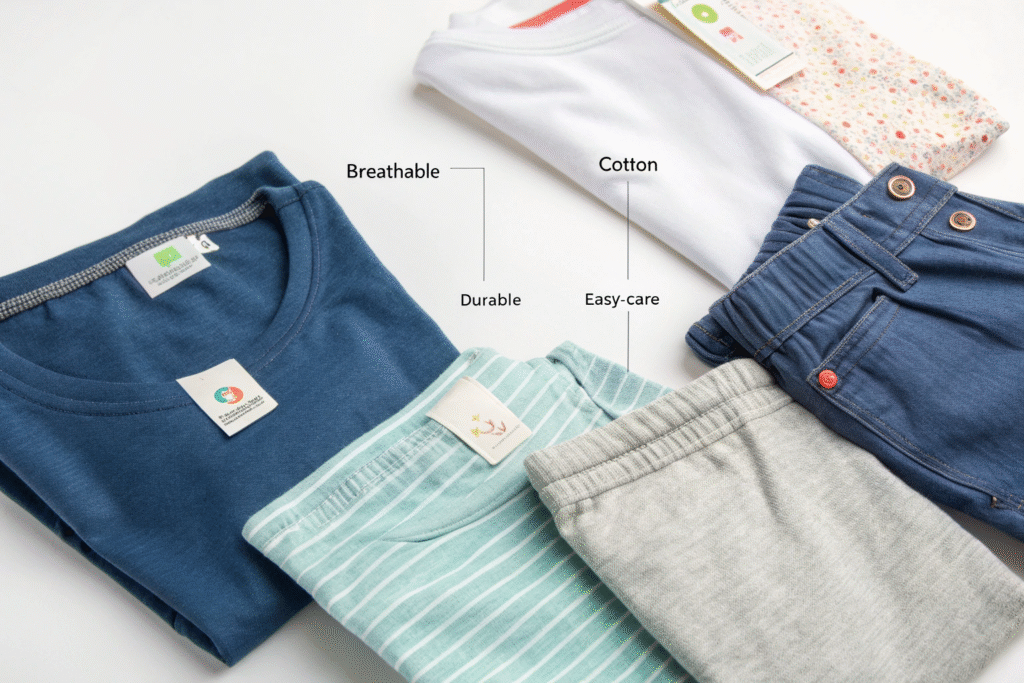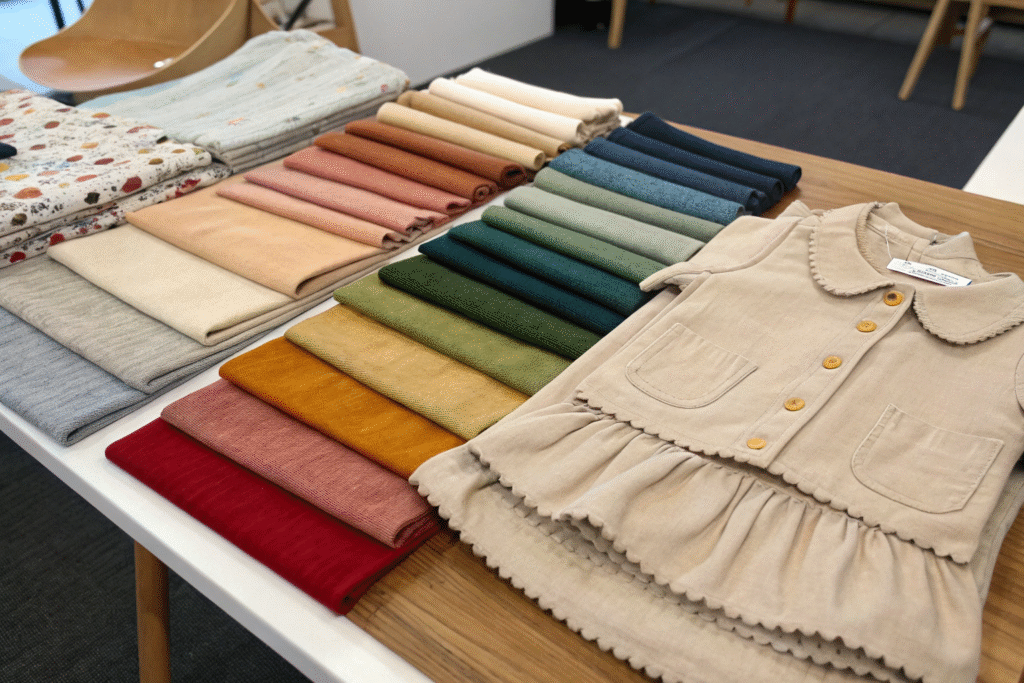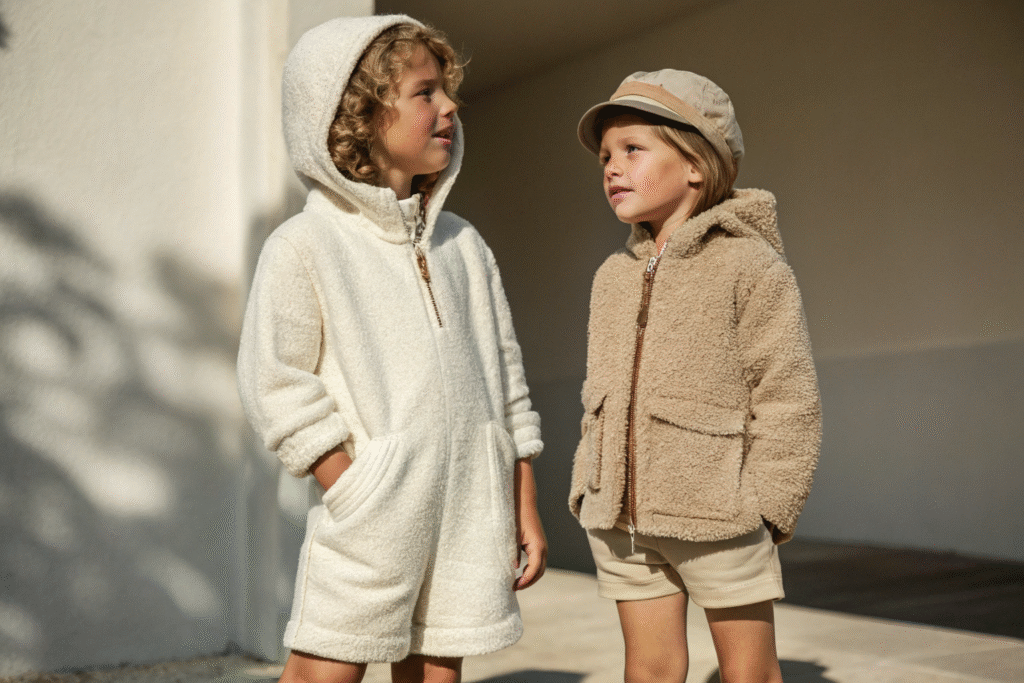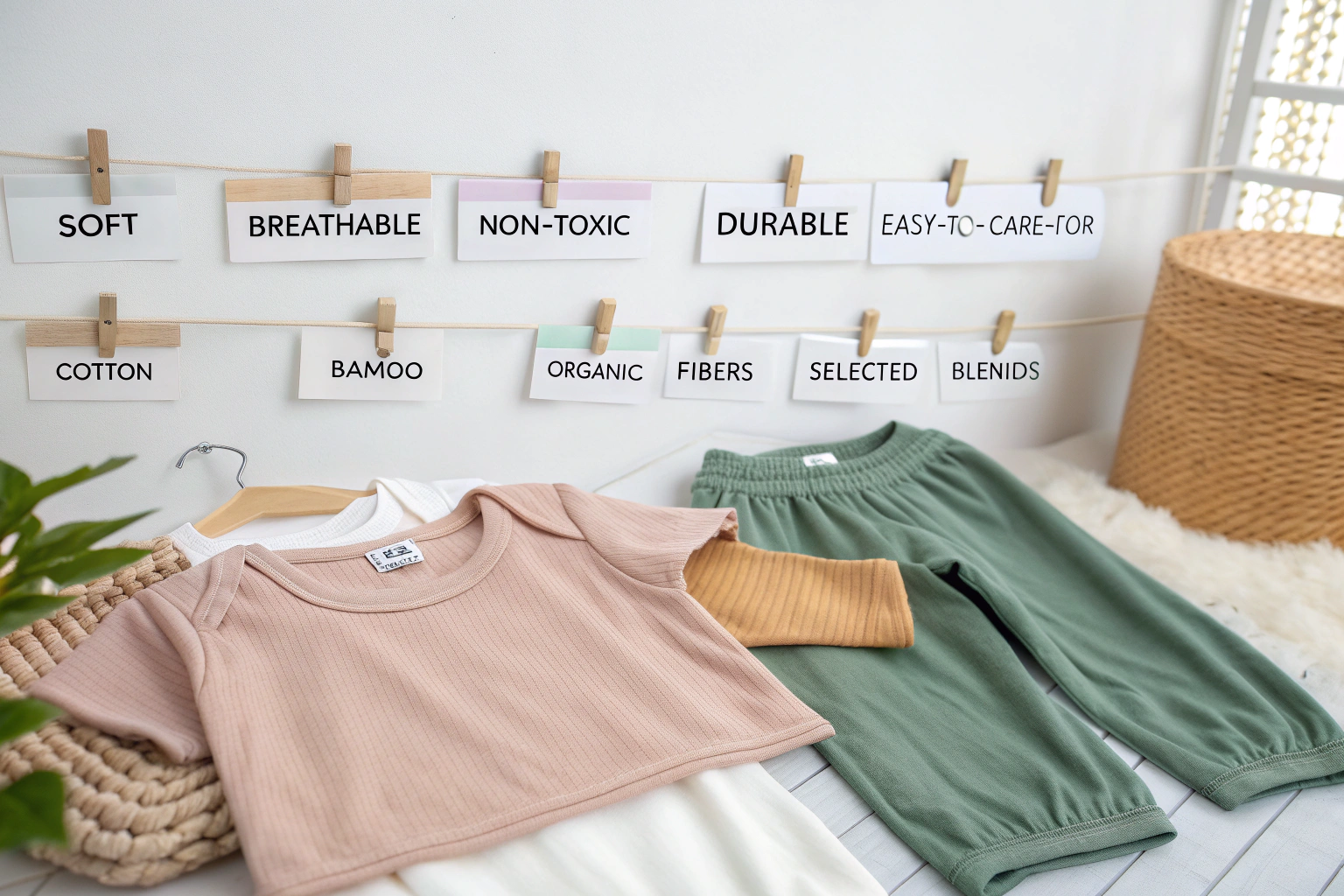When it comes to children’s clothing, fabric selection is one of the most important decisions. Kids have sensitive skin, they are constantly active, and their clothes go through frequent washing. If the wrong fabric is chosen, it can cause irritation, discomfort, or quick wear and tear. On the other hand, the right fabric ensures safety, comfort, and durability, while also making life easier for parents.
The best fabrics for children’s clothing are soft, breathable, non-toxic, durable, and easy to care for. Cotton, bamboo, organic fibers, and selected blends meet these requirements better than most alternatives. To make the right choice, parents and manufacturers must consider not only the fiber type but also seasonal needs, maintenance, and long-term performance.
What Factors Should Guide Fabric Choice for Kids?
Children’s clothes face unique challenges that adult clothing does not. Kids move, sweat, and play in ways that test the limits of fabric performance. Because of this, the fabric must provide both comfort and protection while standing up to frequent use.
By focusing on skin safety, breathability, durability, and ease of care, parents and brands can choose fabrics that work well for children.

Key Considerations
- Skin Safety: Hypoallergenic fabrics certified by OEKO-TEX® are essential to avoid irritation.
- Breathability: Fabrics must allow airflow since children sweat more than adults.
- Durability: Sturdy materials are needed because kids’ clothes undergo heavy wear and many wash cycles.
- Ease of Care: Parents prefer low-maintenance fabrics that wash easily and dry quickly.
- Seasonal Suitability: Fabrics should be chosen with weather in mind—light for summer, insulating for winter.
When these factors are prioritized together, fabric selection becomes more reliable and child-friendly.
Which Fabrics Are Best for Children’s Clothing?
Once the guiding factors are clear, the next step is to evaluate fabric types. Natural fabrics generally provide softness and comfort, while blends add durability and flexibility. By combining these options, apparel can meet both children’s and parents’ needs.
Cotton, bamboo, linen, wool, fleece, and polyester blends are widely recognized as top choices for kids’ wear.

Cotton and Organic Cotton
- Pros: Soft, breathable, and hypoallergenic. Organic cotton avoids pesticides and chemicals, making it safer.
- Cons: Tends to shrink and wrinkle unless pre-washed.
- Best Use: Everyday wear, school uniforms, baby clothes.
Bamboo
- Pros: Naturally antibacterial, moisture-wicking, and very gentle on skin.
- Cons: Slightly more expensive than cotton.
- Best Use: Pajamas, underwear, clothing for sensitive skin.
Linen
- Pros: Extremely breathable and lightweight, ideal for hot climates.
- Cons: Wrinkles easily and has less stretch.
- Best Use: Summer dresses, shirts, casual wear.
Wool
- Pros: Naturally insulating and warm.
- Cons: Requires special care, and some varieties may feel itchy.
- Best Use: Winter sweaters, coats, thermal clothing.
Fleece
- Pros: Lightweight, warm, and easy to wash.
- Cons: Made from synthetics and less breathable.
- Best Use: Jackets, outerwear, cold-weather playwear.
Polyester and Cotton Blends
- Pros: Combine natural comfort with synthetic strength and wrinkle-resistance.
- Cons: Less breathable than pure cotton.
- Best Use: Activewear, uniforms, durable play clothes.
As Healthy Children notes, fabrics free from harsh dyes and finishes are the safest option for babies and toddlers.
How Does Season Affect Fabric Choice?
Fabric choice must also take climate into account. Children’s needs change with the weather, so the ideal fabric in summer is very different from what works in winter.
By aligning fabric type with seasonal demands, parents can ensure year-round comfort and protection.

Summer Clothing
- Best Fabrics: Cotton, organic cotton, linen, and bamboo.
- Reason: These fabrics are breathable, sweat-absorbent, and keep kids cool.
Winter Clothing
- Best Fabrics: Wool, fleece, and cotton-poly blends.
- Reason: These materials insulate body heat and resist cold weather.
Transitional Seasons
- Best Fabrics: Layered cotton blends and lightweight fleece.
- Reason: These options adapt easily to changing temperatures.
When fabric selection follows seasonal logic, children remain both comfortable and safe in varying conditions.
What Practical Tips Ensure Safe and Durable Kids’ Clothes?
Even after selecting fabrics, practical steps can further improve clothing quality. These steps help maintain comfort, extend garment life, and avoid potential hazards.
Pre-washing, avoiding harsh finishes, and using certified fabrics all ensure better results.

Useful Guidelines
- Pre-Wash Fabrics: Removes residues and reduces the risk of shrinkage.
- Avoid Harsh Dyes: Protects sensitive skin from irritation.
- Choose Soft Textures: Prevents chafing, especially in baby garments.
- Mix Natural and Synthetic Fibers: Improves durability while maintaining comfort.
- Check Certifications: Fabrics with OEKO-TEX® labels guarantee chemical safety.
By following these guidelines, both parents and manufacturers can ensure children’s clothes remain safe and long-lasting.
Conclusion
Selecting fabric for children’s clothing involves more than aesthetics—it directly affects safety, comfort, and durability. Cotton, bamboo, linen, wool, fleece, and blends each serve unique purposes. Natural fibers provide softness and breathability, while blends enhance strength and easy care. Adjusting fabrics for seasonal needs ensures children stay comfortable in all conditions.
For parents, the goal is to keep children safe and comfortable. For brands, it is also about building trust through responsible material choices. At Shanghai Fumao, we supply safe, certified fabrics for children’s wear, from organic cotton and bamboo to durable eco-friendly blends. To explore sourcing options for your kids’ clothing line, contact our Business Director Elaine at elaine@fumaoclothing.com.










